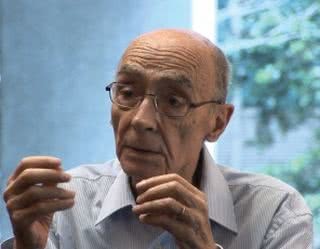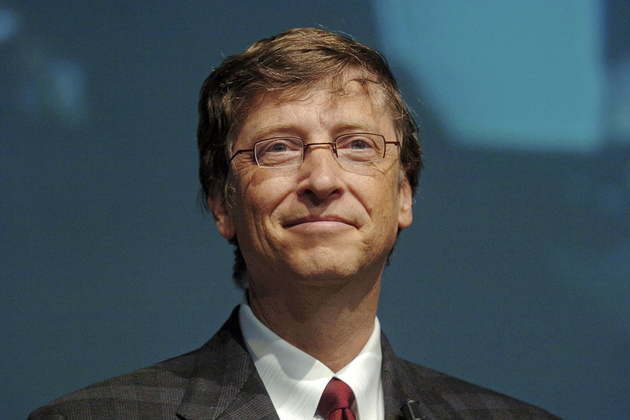José Saramago was a Portuguese writer, poet, short story writer, playwright and journalist. It is considered the greatest expression of contemporary Portuguese literature.
He was the first writer in the Portuguese language to receive the Nobel Prize for Literature, in 1998.
Saramago was born on November 16, 1922, in the village of Azinhaga. The village is located in the Portuguese province of Ribatejo.
The writer died on June 18, 2010, in Lazaronte, Spain, in the presence of his wife, Spanish journalist Pilar Del Rio, and family.
 José Saramago
José Saramago
Biography
José de Souza Saramago has lived most of his life in Lisbon, where his family migrated when he was two years old.
Despite his recognition as a writer, he only attended technical courses. For five years he was at school to learn the trade of mechanical locksmith.
The name Saramago was only discovered when he started attending school. It was added spontaneously by the clerk of the registry in allusion to the family's surname.
Saramago is the name of a plant that grows in the region where the writer was born.
He was a designer, civil servant in the health and social security sectors, journalist, editor and translator. He was also the literary and production director of a literary magazine, Seara Nova.
From 1972 to 1973, he was a political commentator for the newspaper Diário de Lisboa, where he also coordinated a cultural supplement.
Saramago was also a member of the Portuguese Writers Association and was deputy director of the Diário de Notícias.
In 1976, he made the decision to live exclusively from literature. He started as a translator before reaching the authorship stage.
received the Camões Award in 1995.
Main Works
- Land of Sin (1947)
- Handbook of Painting and Calligraphy (1977)
- Raised from the Ground (1980)
- Memorial of the Convent (1982)
- The Year of the Death of Ricardo Reis (1984)
- The Stone Raft (1986)
- History of the Siege of Lisbon (1989)
- The Gospel According to Jesus Christ (1991)
- Essay on Blindness (1995)
- All Names (1997)
- The Cave (2000)
- The Duplicate Man (2002)
- Essay on Lucidity (2004)
- The Intermittencies of Death (2005)
- Cain (2009)
- The Elephant's Journey (2008)
- Skylight (2011)
- Halberds, Halberds, Rifles, Rifles (2014)
Sentences
"If you can look, see. If you can see it, take a look". (Blindness essay)
"What if stories for children became mandatory reading for adults? Could they really learn what they have been teaching for so long?"
Literary Characteristics
Form
Sharp criticism and meticulous description are among the characteristics of Saramago's work. Punctuation is unconventional. Periods appear at the end of paragraphs, which can be long.
The dashes were excluded and the interpretation of the characters' speech is often confused with self-reflection.
Merge real and fictional characters. Examples include Memorial do Convento (1982) and Viagem do Elefante (2008).
Contents
Saramago was an avowed communist and the thought is evidenced in his work. He also made harsh and acidic criticisms of the Catholic Church and its dogmas.
The Gospel According to Jesus Christ
The novel, released in 1991, was censored by the Portuguese government, which considered it offensive to Catholics.
As a result of the political maneuver, Saramago and his wife transferred their residence to the Canary Islands, remaining on the island of Lanzarote.
Among the passages in "The Gospel According to Jesus Christ" is Jesus' sexual involvement with Mary Magdalene.
Cain
The novel Cain, released in 2009, was also considered offensive to the Catholic faith. In the work, Cain questions God's criteria for his choices. God is portrayed as a vain, vengeful and contradictory being.
Blindness essay
The work points out the behavior of a society in the face of an epidemic without explanation or cure in which the affected person lost his sight.
Unlike darkness, blindness was white and terrifying. Gradually, the writer reveals the character of the characters and their institutions.
The novel, released in 1995, was reproduced in cinema in 2008, and won the Cannes festival there.
The film was directed by Brazilian Fernando Meirelles and had the participation of actors Julianne Moore and Mark Ruffalo.
The Intermittencies of Death
Once again, a religious dogma is questioned, death. In the novel, released in 2005, Saramago imagines a strike decreed by his own death, tired of the contradictions and ingratitude of humanity.
While death questions its role, humanity experiences a religious, social, political and structural collapse.
Poetry
The communist traits, the exaltation of freedom, struggle and brotherhood are also present in Saramago's poetry.
After a 19-year hiatus in literature, the author published, in 1966, Os Poemas Possíveis. Here is an example of a poem:
Creation
God doesn't exist yet,
I don't even know when,
Even the sketch, the color will assert itself
In the confusing design of the passage
From countless generations in this sphere.
No gesture is lost,
no trace
That the meaning of life is just this:
make the Earth a God who deserves us,
And give the Universe the God who waits.
Read too:Origins of Portuguese Literature.



